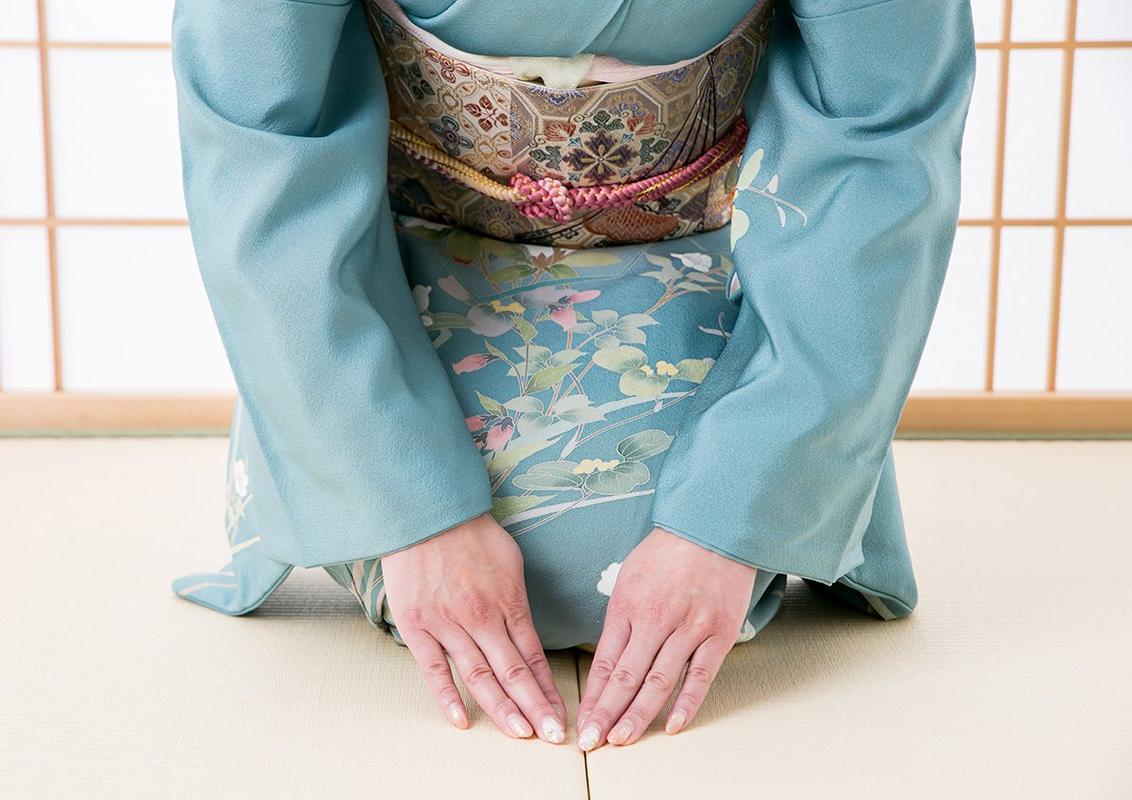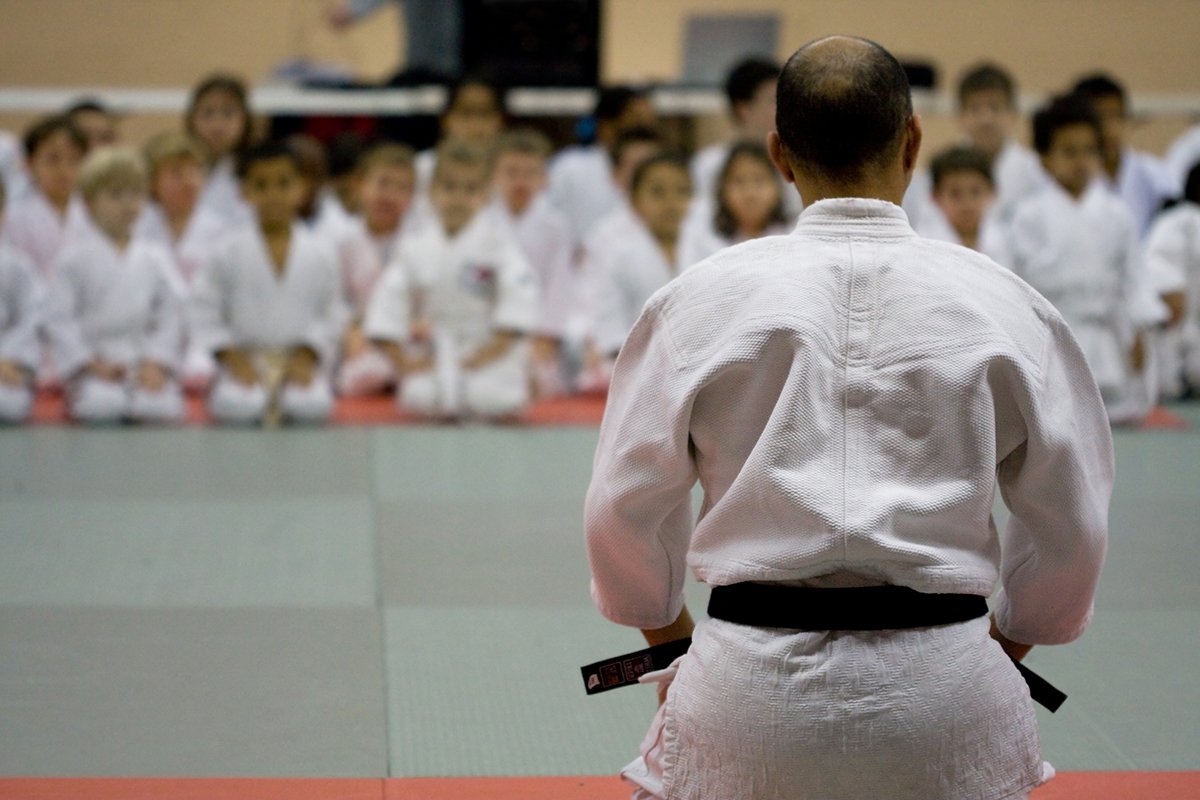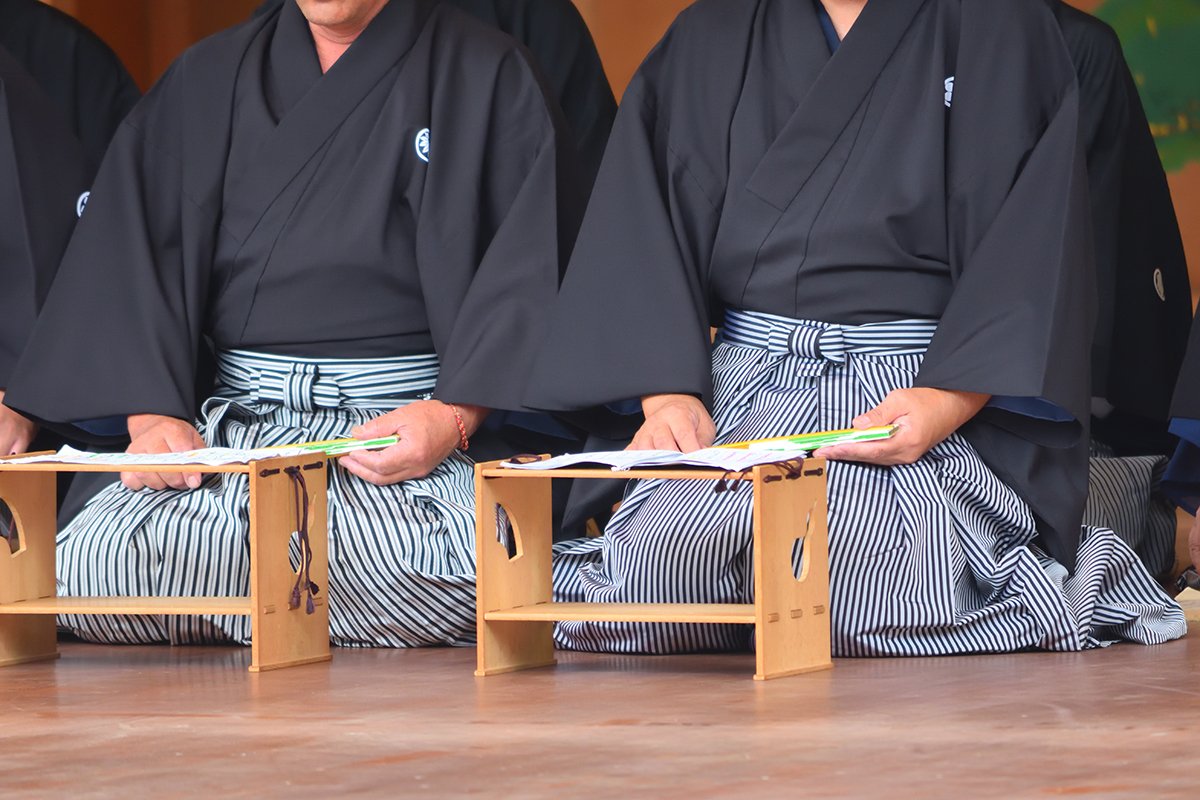In martial arts, the zarei has more meaning than just the greeting before a match or practice begins. As the saying goes, "It begins and ends with a bow," mastering proper etiquette is extremely important in martial arts, and is one of the things that sets it apart from other sports.
This article explains the "zarei" (sitting bow), which is rarely known by anyone other than those who have studied martial arts or Japanese etiquette, including an overview, points to note, the correct way to sit in seiza, and tips for sitting in seiza without getting tired.
What is "zarei"?

First, we will explain what zarei is, its overview and types.
What is Zarei?
A zarei is a bow performed while sitting. Not only are there people in America and Europe, where there is no culture of greeting while sitting, but even in modern Japan, there are probably many people who are not very familiar with etiquette other than the standing bow.
Although seated bows can be learned as etiquette in the tea ceremony or etiquette classes, it can be difficult to know the correct way to do them if you are not familiar with martial arts such as judo or kendo. Standing bows are also performed in martial arts, and although there are minor differences depending on the school and type of martial art, a seated bow is generally performed facing the person you are facing, such as your teacher or opponent in a match.
At this time, it is important not to think of it as "simply sitting and bowing," but to do it with sincerity as a way of showing respect to the other person.
The meaning of bowing changes depending on the angle of your upper body
In a standing risurei, the degree of respect changes depending on the angle at which you bow, and the same is true for a zarei. A typical zarei can be divided into the following three types depending on the angle at which you tilt your upper body from the seiza position.
・Deepest bow
The deepest bow is the most polite of all the seated bows. It is done by lowering your face about 5cm from the floor.
・Normal bow
This is a common method of zarei, where you lower your face about 30cm from the floor.
・Shallow Ceremony
The shallow bow is used when meeting someone passing by or when you need to move on to the next action in a very short time. Lean your upper body at an angle of about 30 degrees to the floor.
It is natural to bow politely to teachers, people you respect, and superiors, but if you repeatedly use the deepest bow, or if you respond with the deepest bow or a regular bow every time you pass by or make a small movement, it can sometimes come across as overly ostentatious. Just as with standing bows, it is important to use the appropriate method for seated bows depending on the situation and the relationship.
How to do Zarei in martial arts such as Karate and Judo and points to note

Now that you understand the basics of zarei, we will explain how to perform zarei in martial arts.
Manners before and after sitting upright
Since zarei is performed while sitting in seiza, it is necessary to know the proper etiquette before and after sitting in seiza. In all martial arts, when sitting in seiza, you sit on your left foot first. When standing up from seiza, it is basic to start with your right foot.
Additionally, before and after sitting in seiza, you take a posture called "kiza" before placing both knees on the tatami or floor. Kiza means that you do not immediately sit down and sit in seiza, but rather your buttocks are resting on your heels. When standing or sitting down, you should move smoothly from the kiza posture to the next movement. When doing this, it is also important to avoid touching the floor or tatami with your hands.
The reason why you should sit with your left foot first when sitting in seiza is because samurai of the past carried their swords on their left hips, and this etiquette meant that they would be able to draw their swords at any time. Keeping your hands off the floor also helps to prevent any gaps, so understanding the meaning behind this etiquette will make it easier to remember.
Although there are differences depending on the type and style of martial arts, the method of zarei generally follows the steps below.
First, stand upright, keep your back straight, and place both hands in front of your knees. Begin with your left hand and place the fingertips of both hands on the floor. When placing your hands on the floor, bring your fingertips inward to form the kanji character for "eight."
Next, lean your upper body toward the floor and assume a bowing position. At this time, start by looking directly at the person you are bowing to, and as you lean your body toward the floor, be aware that your gaze will naturally turn downwards.
When you have finished the zarei and are raising your upper body, gently release your right hand and return both hands to your lap. At this time, too, as you raise your upper body, make sure to naturally shift your gaze to the other person.
Tips for sitting straight to avoid numbness

The seiza posture you assume when performing zarei can easily cause your legs to go numb if you are not used to it. Here are some tips on how to sit seiza in a way that will prevent your legs from going numb, so that you don't feel unsteady or unable to stand when you stand up.
Center of gravity slightly forward
When sitting upright, try to move your center of gravity slightly forward rather than resting it entirely on the soles of your feet. This reduces the strain on the tops of your feet and makes them less likely to go numb.
Put your big toes together
When sitting in seiza position, spreading your heels and overlapping your big toes can also help reduce the strain on your center of gravity. When doing this, try to overlap your big toes lightly, as overlapping them too deeply can cause numbness. Sometimes you may experience cramps in your legs when trying to overlap your big toes, so it's a good idea to practice beforehand.
Open your kneecaps slightly
It is also a good idea to sit with the kneecaps spaced apart rather than bringing them too close together. Women sit in a seiza position with their kneecaps touching, but simply keeping them slightly apart without being too far apart is effective (men sit in a seiza position with their kneecaps spaced apart, so they are naturally spaced apart).
While keeping the above points in mind, it is also important to increase the number of opportunities to sit in seiza on a regular basis and get used to the seiza posture. By getting used to sitting in seiza, you will be able to easily grasp the trick to relieve numbness in your legs and be able to sit for long periods of time.
summary
 A zarei is a bow performed while seated on the floor or tatami mat. It expresses the spirit of bushido and courtesy to the opponent, and is one of the etiquette techniques that is important to know in martial arts, which place great importance on courtesy. The etiquette for a zarei is detailed, with rules for everything from how to go from a standing position to sitting upright, the angle of the bow, and how to return to your original position after the bow, and it varies depending on the martial arts school. Also, since it is performed from a sitting upright position, it is important to sit in a way that does not cause numbness in your legs.
A zarei is a bow performed while seated on the floor or tatami mat. It expresses the spirit of bushido and courtesy to the opponent, and is one of the etiquette techniques that is important to know in martial arts, which place great importance on courtesy. The etiquette for a zarei is detailed, with rules for everything from how to go from a standing position to sitting upright, the angle of the bow, and how to return to your original position after the bow, and it varies depending on the martial arts school. Also, since it is performed from a sitting upright position, it is important to sit in a way that does not cause numbness in your legs.
This article has been partially re-edited by KARUTA from an article originally published on "Nihongo Biyori."
Any unauthorized reproduction or use of the contents, text, images, illustrations, etc. of this website is strictly prohibited.
